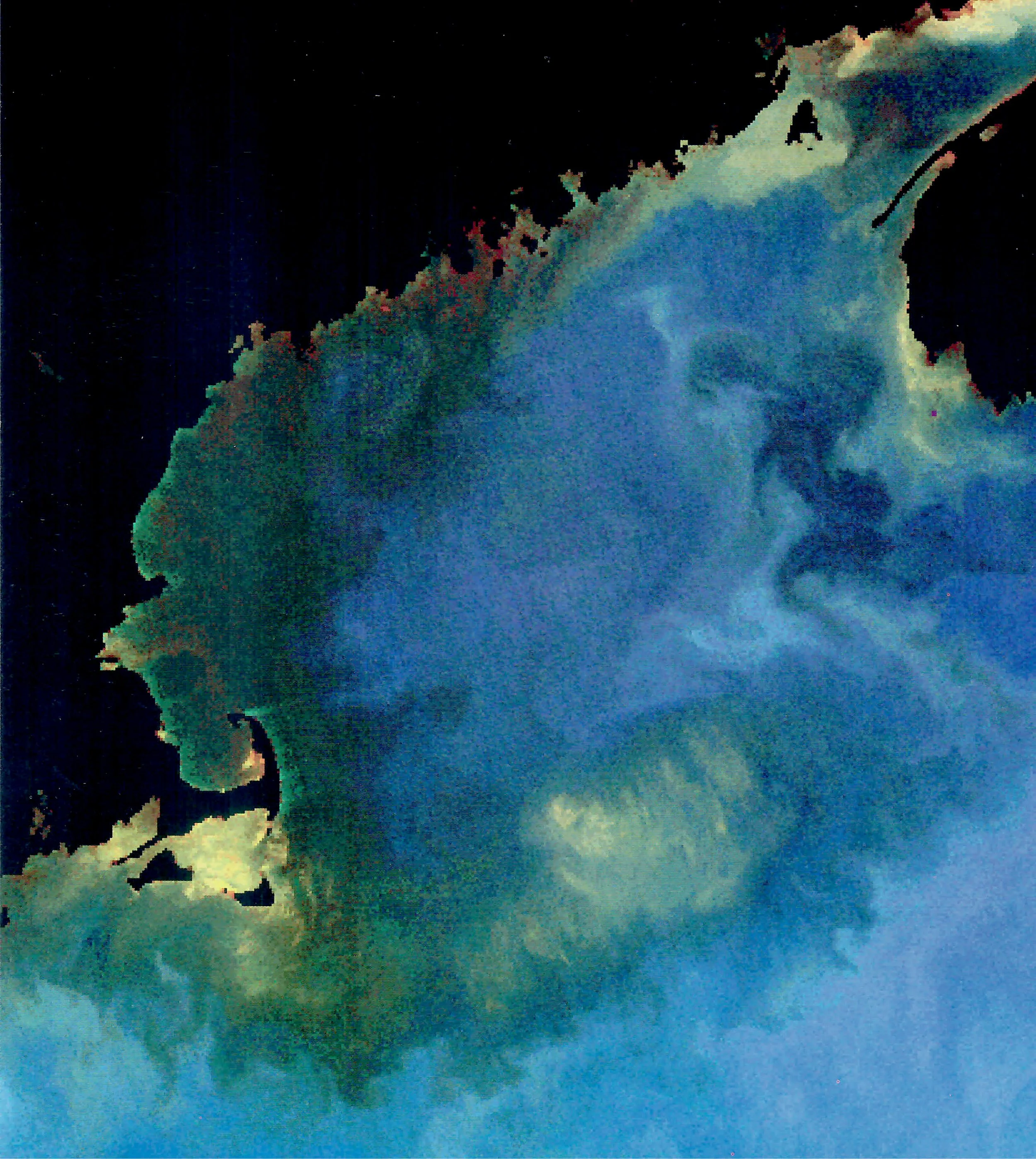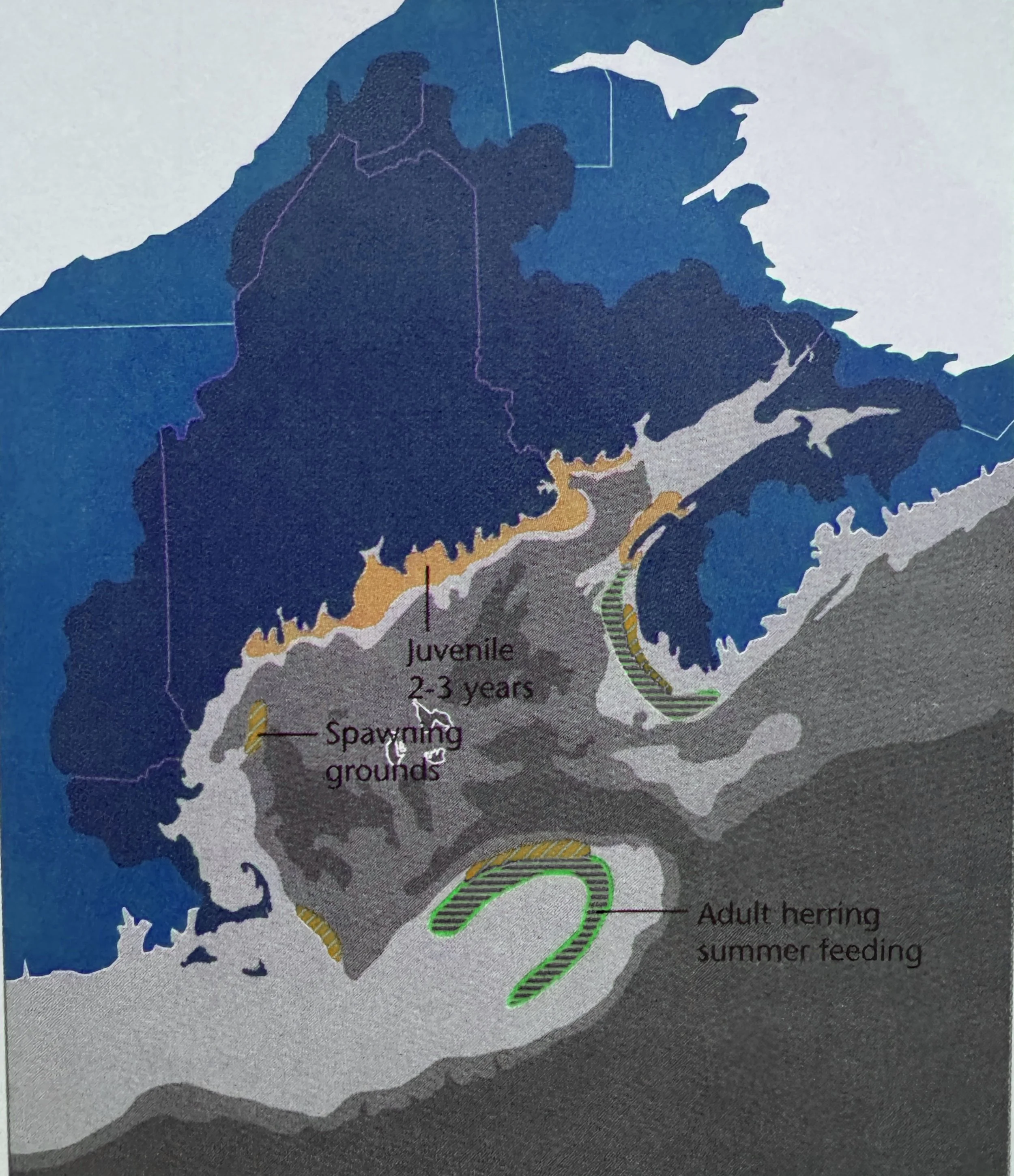Lessons from a Fishery
The Ecology of Herring in the Gulf of Maine
The Atlantic herring are among the most studied of all commercial food fishes. In the US, herring populations are concentrated in the waters off the Maine coast south to New Jersey.
Herring are known for their extreme variability in recruitment, with boom years contrasted with years of poor survival of juveniles. Scientists believe that variable oceanographic and tidal conditions in relation to spawning events affect herring recruitment based on whether the currents that retain larvae in the vicinity of spawning provide a consistent food supply at this critical stage of their life cycle.
Herring stocks tend to separate into distinct spawning populations during the reproductive season and then mix during the remainder of the year.
One of the most significant spawning stocks was off the Eastern Maine coast between West Quoddy Head and Jonesport. A second spawning stock is located in the western Gulf of Maine from Penobscot Bay to Wood Island off Saco Bay, while a third stock has been centered on Georges Bank and Nantucket Shoals.
Herring prefer to lay their eggs on gravelly bottoms in well-mixed tidal waters. After hatching, larval herring feed on small shrimp-like animals called copepods. Juvenile herring school in large numbers in bays and estuaries throughout the summer before migrating offshore as 1-year-olds. One-to-two-year-old fish subsequently migrate back into coastal waters where they became a mainstay of the sardine fishery.
The herring fishery generally follows herring as they migrate. Fishing in the southern portion of herring’s range (especially off the coast of New Jersey) is common in the winter, while herring appear in Downeast waters near the mouth of Passamaquoddy Bay in early May, followed by the appearance of herring off Midcoast Maine some months later between June and November.
The Gulf of Maine has recently experienced its warmest 5-year period (2015–2020) and this warming is associated with a decline in Calanus, a small shrimp-like crustacean, which is the favored food supply of young herring.
Beyond its effects on herring, the higher temperature has also impacted cod, lobster, puffins, and northern right whales, which foreshadow a cascade of unknown effects Maine coastal communities need to understand and to adapt to.
Dense phytoplankton blooms in the mouth of the Bay of Fundy, Grand Manan, along the Downeast coast and the island studded coast of Maine are shown in yellow, orange and red shades, with red being the most dense blooms. Gray-green areas appear dark because phytoplankton absorbs sunlight and therefore, less light is reflected from the water. Courtesy of Bigelow Laboratory for Ocean Sciences
The distribution of adult herring on different spawning grounds in the Gulf of Maine shows a distinctive cycle and seasonality. In the spring in the upper Bay of Fundy, herring populations begin spawning in May. By June the herring grounds off Grand Manan and Passamaquoddy Bay see concentrations of spawning herring. Off the eastern coast of Maine, herring spawn in August, off central and western Maine, in September, in the western portions of the Gulf and on Nantucket Shoals, in October and on the rim of Georges and Browns Banks, in November. Courtesy of P. Conkling



